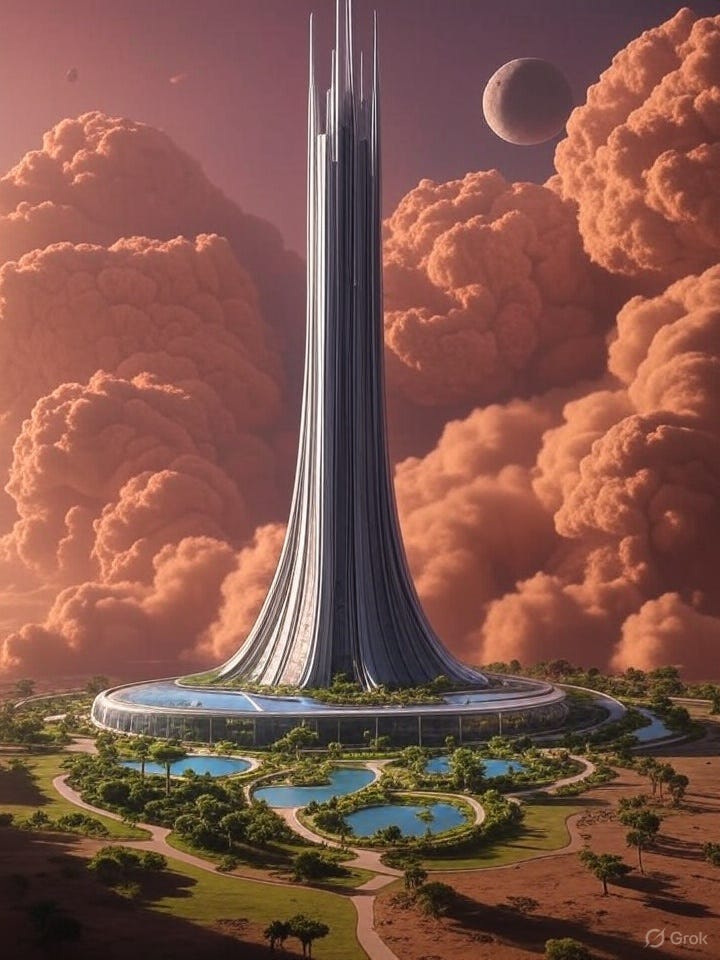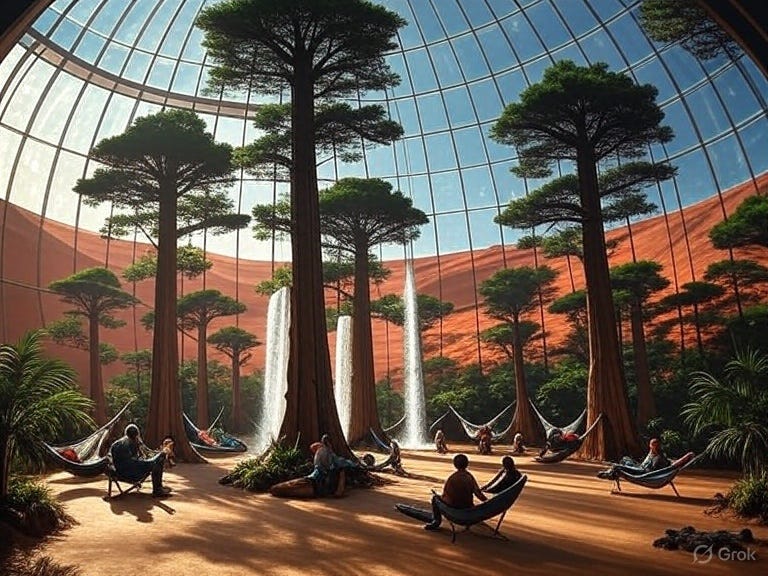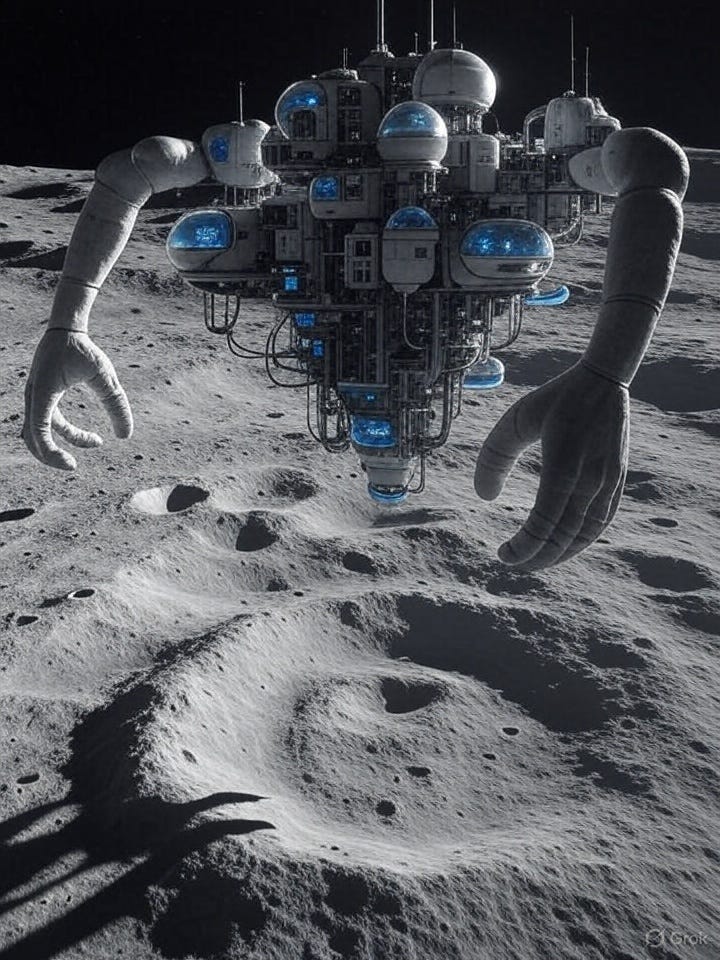As humanity edges closer to establishing permanent settlements on Mars, the red planet presents not just scientific and engineering challenges, but an unparalleled canvas for architectural innovation. With visions from organizations like NASA and private firms such as SpaceX paving the way for colonization, the design of Martian habitats is evolving from mere survival shelters to awe-inspiring structures that could redefine human living. Drawing on concepts from real-world proposals, this article explores how Mars' unique environment—particularly its lower gravity—could enable grandiose, artistic architectures that blend functionality with surreal beauty, ultimately making the planet an irresistible home for future colonists.
Gravity's Liberation: Building on a Lighter World
Mars' surface gravity is approximately 3.711 meters per second squared, or about 38% of Earth's. This reduced pull fundamentally alters structural engineering, allowing for buildings that dwarf anything feasible on our home planet. On Earth, gravity imposes strict limits: skyscrapers like the Burj Khalifa push materials to their breaking points, requiring immense reinforcement against weight and wind. On Mars, however, architects could erect towers several times taller with less material, as the load on foundations and supports is drastically lighter.
This opens doors to expansive designs. Imagine habitats spanning kilometers, with internal volumes vast enough to simulate Earth's open spaces—complete with artificial biospheres, parks, and even simulated weather systems. Projects like Foster + Partners' Mars Habitat concept already hint at this, proposing 3D-printed structures using Martian regolith (soil) built by autonomous robots before human arrival. These could evolve into mega-structures where gravity's leniency permits thinner walls, wider spans, and innovative shapes that would collapse under Earth's heft. As one expert discussion notes, Martian architecture will indeed look different, potentially featuring larger and taller buildings adapted to the low-gravity environment.
Moreover, low gravity mitigates some seismic risks—Mars experiences "marsquakes," but their effects are tempered—allowing for more daring verticality. This isn't just about height; it's about efficiency. Structures could incorporate lightweight materials harvested in situ, reducing the need for costly Earth shipments and aligning with sustainable colonization goals outlined in NASA's Moon to Mars Architecture.
Hybrid Habitats: Blending Underground Fortresses and Soaring Edifices
Survival on Mars demands protection from radiation, extreme temperatures, and micrometeorites, leading to hybrid designs that combine subterranean bunkers with surface skyscrapers. Underground constructions, reminiscent of the vault-like refuges in the *Fallout* video game series, could serve as shielded cores for living quarters, labs, and agriculture. Buried beneath regolith layers, these would provide natural insulation and radiation barriers, much like the perforated, shape-optimized structures proposed in recent studies for Martian habitats.
Above ground, low gravity enables the rise of towering edifices with cavernous interiors designed to recreate Earth-like environments. These could house domed atria filled with greenery, water features, and communal spaces, fostering psychological well-being in an otherwise barren landscape. Concepts such as inflatable structures or modular assemblies, like the Lavapolis and Hexamars designs from early NASA studies, illustrate this blend: reusable, expandable frameworks that grow with the colony. The result? Habitats where colonists feel they're building a new Earth inside Mars, turning isolation into inspiration.
Aesthetics as a Magnet: Crafting a Superior Existence
Beyond functionality, Martian architecture must captivate the human spirit to attract settlers. On Earth, we're bound to one world; on Mars, ingenuity could create wonders worth dedicating a lifetime to. Aesthetic appeal becomes a psychological lifeline, offering a "unique vital experience" superior to terrestrial life—vast vistas within habitats, illuminated by filtered sunlight or artificial stars, evoking a sense of boundless possibility.
This allure is crucial for long-term colonization. Proposals emphasize human-centered design, such as Norman Foster's habitats that merge aesthetics with practicality, ensuring settlements aren't just survivable but desirable. Imagine waking to panoramic views of Martian dunes from a gravity-defying spire, or strolling through bio-domes that mimic lost Earth paradises. Such designs could make Mars a birthplace for generations, where living, working, and dying feels not like exile, but elevation.
Architects as Dream Sculptors: From Canvas to Cosmos
Perhaps the most exhilarating prospect is how low gravity unshackles architects, transforming them into "sculptor-architects" who blend art and engineering. On Earth, modernist sculptures inspired by Salvador Dalí's melting clocks or Pablo Picasso's fragmented forms are confined to small scales; gravity crushes ambitious attempts at larger, surreal figures. Mars changes that equation, enabling these dream-like creations at monumental proportions.
Picture habitats shaped like Dalí's fluid, impossible landscapes—twisting towers that defy Euclidean geometry, or Picasso-esque facades with asymmetrical, multi-dimensional protrusions. Surrealism's emphasis on vast, illusory spaces aligns perfectly with Martian potential, as noted in architectural analyses of artists like Dalí and Tanguy, who explored open planes and irrational discontinuities. With one-third gravity, materials withstand greater stresses, allowing "authentically unreal" structures straight from dreams to rise on the surface.
This artistic freedom represents an infinite frontier for new generations of designers. Concepts like SAGA Space Architects' Mars Gravity Pavilion experiment with steeper stairs and altered movements in low gravity, hinting at how everyday elements could become sculptural. On Mars, architecture isn't just shelter—it's sculpture, inviting colonists to inhabit art.
Echoes on the Moon and Across the Solar System
While Mars takes center stage, the Moon offers even wilder possibilities with its gravity at just one-sixth of Earth's. Here, architectural "locuras" (madnesses) could scale orders of magnitude higher, with structures resembling floating cities or enormous, ethereal forms. NASA's Moon to Mars Architecture includes elements like lunar surface habitats, evolving from foundational exploration to sustained presence. Concepts such as water-based architectures from Lockheed Martin or double-layered envelopes for lunar bases underscore this potential for extreme innovation.
Extrapolating further, these principles could apply to Jupiter's moons or asteroid outposts, where varying gravities inspire tailored wonders. Yet, Mars remains the prime focus: closest, most Earth-like, and ripe for human-scaled artistry.
A New Renaissance in the Stars
Martian architecture promises a renaissance where gravity's constraints yield to creativity, birthing habitats that are functional fortresses, aesthetic marvels, and sculptural masterpieces. By drawing on emerging concepts—from 3D-printed regolith domes to surreal, low-gravity spires—humanity could forge a world where colonists not only survive but thrive in beauty. As we prepare for the red horizon, these designs remind us: the true conquest of Mars lies in making it a place we'd choose to call home.
















Share this post